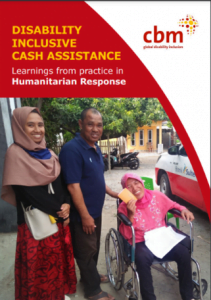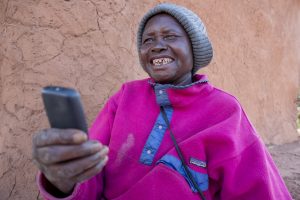People with disabilities face 10-40% higher costs – does CVA account for this?

The objective of CVA in humanitarian crisis is to support affected populations to meet their needs in a dignified way. Transfer values for CVA typically rely on a Minimum Expenditure Basket (MEB), which defines what individuals or households require to meet basic needs and the cost attributed to these according to the local market.
Does humanitarian CVA consider the 10-40% additional cost?

Evidence from a review of multipurpose cash assistance programs managed by CBM Global in a variety of humanitarian contexts, shows that people with disabilities have specific needs, which go beyond the basic components of the typical MEB. These include accessible transport, specific dietary- and hygiene items, extra blankets or specific types of clothes, medicines and therapy or the need for replacing or repairing assistive devices. If humanitarian cash transfers are insufficient to adequately address these needs, people with disabilities cannot equitably participate and benefit from the assistance.
These findings are in line with research on the costs of living with a disability outside of humanitarian contexts. In 2017 a meta-analysis of 20 peer-reviewed journal articles on the costs associated with disability, found sizable additional costs for people with disabilities to reach the same standard of living as people without disabilities. The estimated extra costs varied between 10% and 40% and some patterns were consistent across studies: Costs varied according to the severity of disability and household composition, with highest costs observed among people with severe disabilities and among people with disabilities living alone or in small sized households.
The way transfer values are calculated for people with disabilities must change

The conclusion for humanitarian actors is clear: To achieve equal outcomes for people with disabilities to cover basic needs, the calculation of the MEB, the multisectoral needs assessments, and the transfer values for CVA must take account of the extra costs faced by people with disabilities. How do we achieve this? It starts with having good data.
The MEB analysis must be built on inclusive data, which is disaggregated by disability. Data collection and analysis should be based on self-identification, using tools tested in humanitarian contexts, such as the Washington Group Questions. The participation of people with disabilities and their representative groups is key. The analysis should reflect their perceptions and concerns and also use and acknowledge their expertise in order to identify the needs and barriers of people with disabilities.
Secondly, humanitarian actors must assess the specific needs and requirements of people with disabilities. Some needs will go beyond the scope of multipurpose cash assistance and require supplementary targeted assistance alongside cash and voucher programs. This might include the repair and replacement of assistive devices or the provision of accessible transport to cash distribution points and markets. Both are prerequisites for people with disabilities to access the cash and voucher program! Specific programming is also needed to ensure the protection and dignity of women and girls with disabilities and other people who are at a proportionally higher risk of being left behind or being harmed.
Humanitarian assistance can deliver equitable outcomes for people with disabilities but only when specific actions for inclusion are in place. Cash and vouchers play an important role for the empowerment of people with disabilities in humanitarian crisis. It is up to us to put the tools and approaches for inclusive CVA into practice.
Join our event to learn more
Register now for our virtual event; Mainstreaming disability inclusion into humanitarian CVA, where we will further explore the themes addressed in this blog. It is organised by CBM Global and CALP and will run from 9h-10h30 EST / 14h-15:30h UTC on March 7, 2023.
Main Image: © Julie Smith / CBM Global
About the author:
Dr. Manuel Rothe has worked for international NGOs in different countries in development and humanitarian action since 2005. Currently, he works for CBM Global as a Senior Humanitarian Programme Officer and cash focal person.

About CBM Global:
CBM Global works alongside people with disabilities in the world’s poorest places to transform lives and build inclusive communities where everyone can enjoy their human rights and achieve their full potential. CBM Global and its partners have provided disability-inclusive cash assistance in humanitarian crisis for many years.
About IOM:
Established in 1951, the International Organization for Migration (IOM) is the leading intergovernmental organization in the field of migration and is committed to the principle that humane and orderly migration benefits migrants and society. IOM is part of the United Nations system, as a related organization. IOM supports migrants across the world, developing effective responses to the shifting dynamics of migration and, as such, is a key source of advice on migration policy and practice. The organization works in emergency situations, developing the resilience of all people on the move, and particularly those in situations of vulnerability, as well as building capacity within governments to manage all forms and impacts of mobility.


